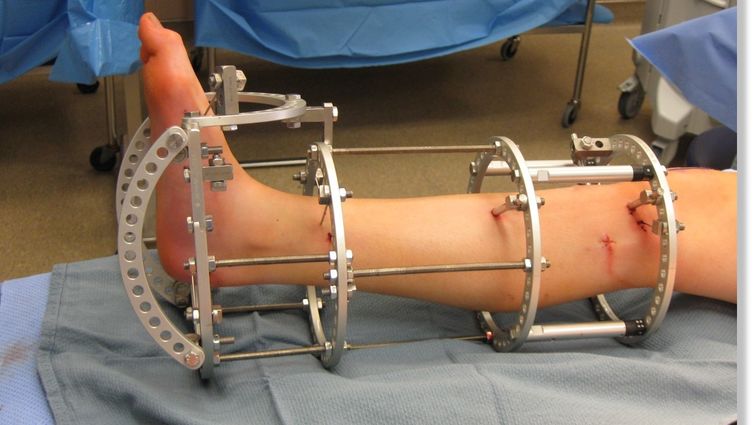What Is Limb Lengthening Surgery?
Limb lengthening is a surgical procedure designed to gradually increase the length of bones in the legs or arms. Originally developed to correct congenital deformities, trauma-related shortening, or discrepancies caused by disease, the surgery is now also used for cosmetic purposes under carefully controlled conditions.
The procedure works on the principle of distraction osteogenesis, which means the bone is carefully cut and slowly stretched. New bone tissue forms in the gap, allowing the limb to lengthen over time without compromising strength.
Who Can Benefit from Limb Lengthening?
Limb lengthening surgery can help people with:
Congenital limb differences: Conditions present from birth that cause unequal limb lengths.
Post-traumatic shortening: Injuries or fractures that heal improperly, leaving one limb shorter.
Growth-related discrepancies: Differences in limb length caused by abnormal growth patterns.
Cosmetic concerns: Patients seeking proportional height or limb symmetry for personal reasons.
It’s important to note that the procedure is highly individualized, and not everyone is a candidate. Orthopaedic specialists assess bone health, age, and overall medical condition before recommending surgery.
How the Surgery Works
Limb lengthening is a gradual, carefully monitored process. Here’s how it typically unfolds at Adam Vital Hospital:
- Pre-Surgery Planning
Before surgery, patients undergo a detailed evaluation:
Bone imaging using X-rays or CT scans
Measurements to determine the target length
Assessment of overall health and mobility
Counseling to explain the process, risks, and rehabilitation
Planning ensures the procedure is safe, effective, and customized to the patient’s anatomy.
- Surgical Procedure
Under anesthesia, the surgeon makes a precise cut in the bone to be lengthened. A specialized device—either an external fixator (a frame outside the limb) or an internal telescopic nail—is attached to gradually stretch the bone.
External fixators: Adjustable rods or pins on the outside of the limb allow slow, controlled stretching.
Internal nails: Telescopic rods placed inside the bone gradually extend, eliminating the need for external hardware.
The bone is lengthened in small increments, typically about 1 millimeter per day. This slow pace allows new bone tissue to form naturally in the gap.
- Post-Surgery Recovery
Recovery is a long-term commitment. Patients often follow a strict physical therapy program to maintain joint mobility, strengthen muscles, and ensure proper alignment.
Initial weeks focus on careful movement and weight-bearing exercises.
The lengthening process continues over several weeks or months, depending on the desired gain.
Once the target length is achieved, a consolidation phase allows the new bone to solidify and harden.
During this period, patients are closely monitored with regular X-rays to ensure safe and effective bone growth.
Rehabilitation and Physical Therapy
Physical therapy is critical for a successful outcome. It helps prevent stiffness, maintain joint flexibility, and strengthen supporting muscles.
Range-of-motion exercises: Keep joints mobile and prevent contractures.
Weight-bearing exercises: Gradually reintroduce stress to the new bone to encourage strength.
Gait training: Helps patients walk naturally as limb length increases.
Patients often remark that the therapy is as important as the surgery itself, shaping the final result and ensuring long-term functionality.
Risks and Considerations
Like any surgery, limb lengthening carries potential risks. Common considerations include:
Infection: Especially with external fixators, requiring careful monitoring.
Joint stiffness: Prevented with rigorous physiotherapy.
Delayed bone healing: Occasionally, additional interventions may be needed.
Nerve or soft tissue irritation: Careful surgical technique minimizes this risk.
At Adam Vital Hospital, we emphasize thorough patient education and close follow-up to manage risks effectively and ensure safe recovery.
Benefits of Limb Lengthening Surgery
When performed successfully, limb lengthening offers both functional and psychological benefits:
Corrects limb discrepancies: Improves posture, gait, and overall mobility.
Enhances confidence: Patients often report increased self-esteem and comfort in social or professional settings.
Restores symmetry: Functional improvements reduce strain on joints and muscles caused by uneven limbs.
The transformation is often described as life-changing—not just physically, but emotionally.
Why Choose Adam Vital Hospital
At Adam Vital Hospital, limb lengthening is handled by experienced orthopaedic surgeons supported by a multidisciplinary team of physiotherapists, rehabilitation specialists, and nursing staff.
What sets us apart:
Advanced surgical techniques: Internal and external devices tailored to each patient.

Comprehensive rehabilitation: Personalized therapy plans ensure optimal recovery.
Patient-focused care: We guide patients through every step, from initial consultation to full recovery.
Safety and precision: Regular imaging and close monitoring prevent complications and maximize results.
Final Thoughts
Limb lengthening surgery is more than a procedure—it’s a journey. It requires patience, commitment, and expert guidance. But for patients struggling with limb discrepancies or seeking proportional height, it offers the opportunity to regain function, improve mobility, and restore confidence.
At Adam Vital Hospital, we are dedicated to supporting patients throughout this journey. From careful planning and precise surgery to rehabilitation and long-term follow-up, our goal is clear: to help patients move, stand, and live better than ever before.
If you are considering limb lengthening surgery, early consultation with an orthopaedic specialist can help determine whether you are a candidate and guide you safely toward your goals.